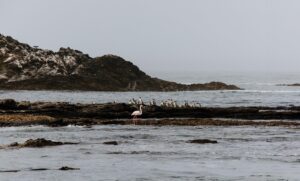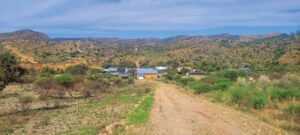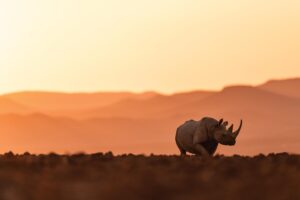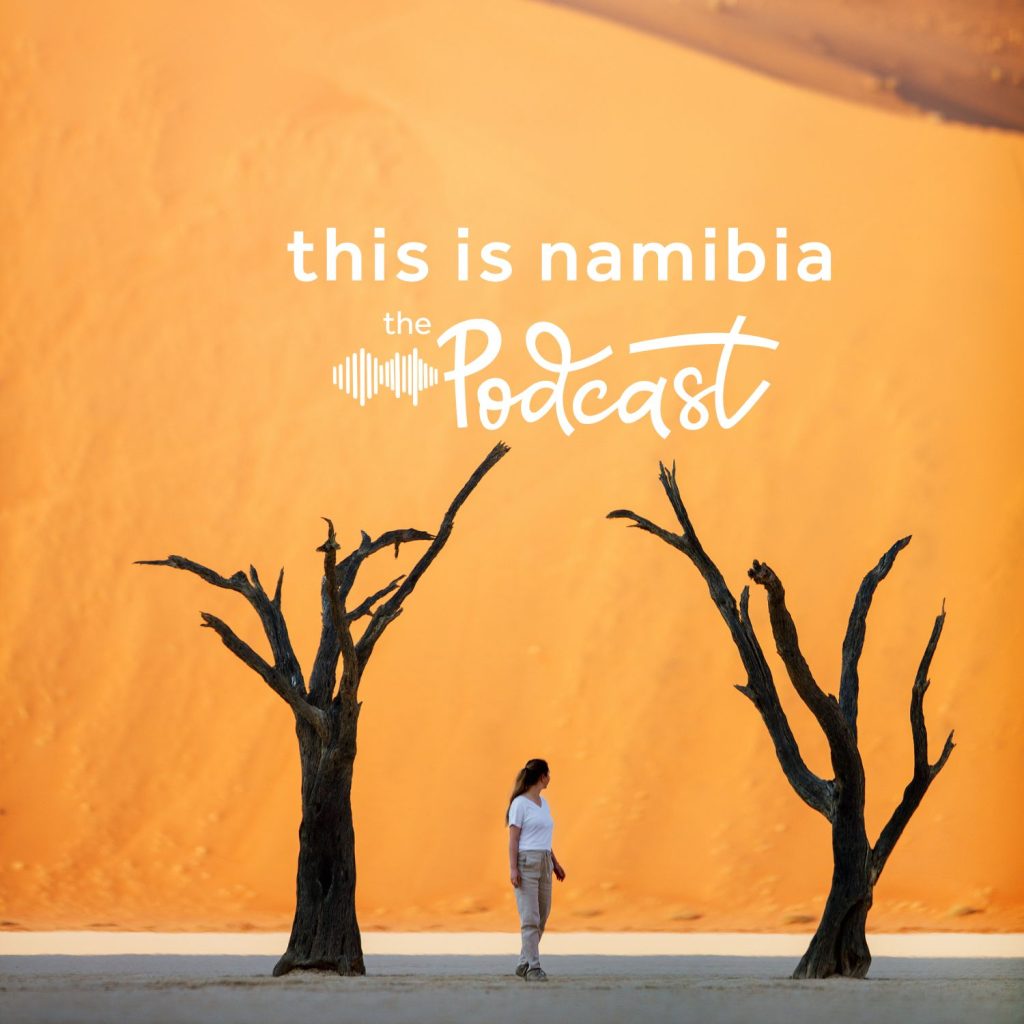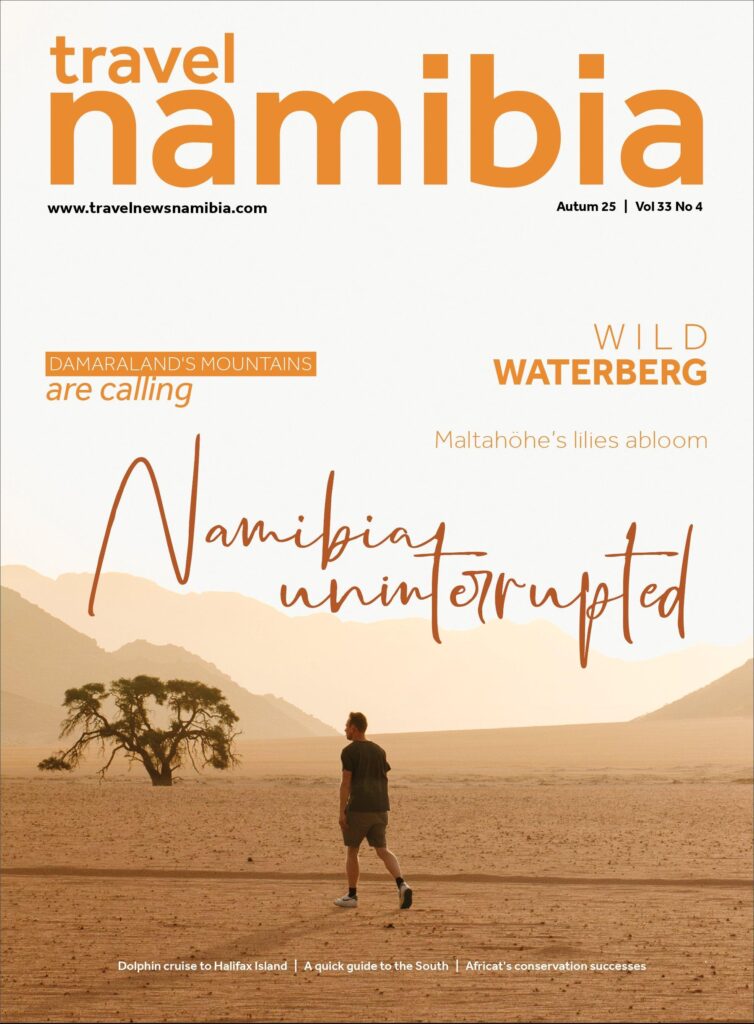
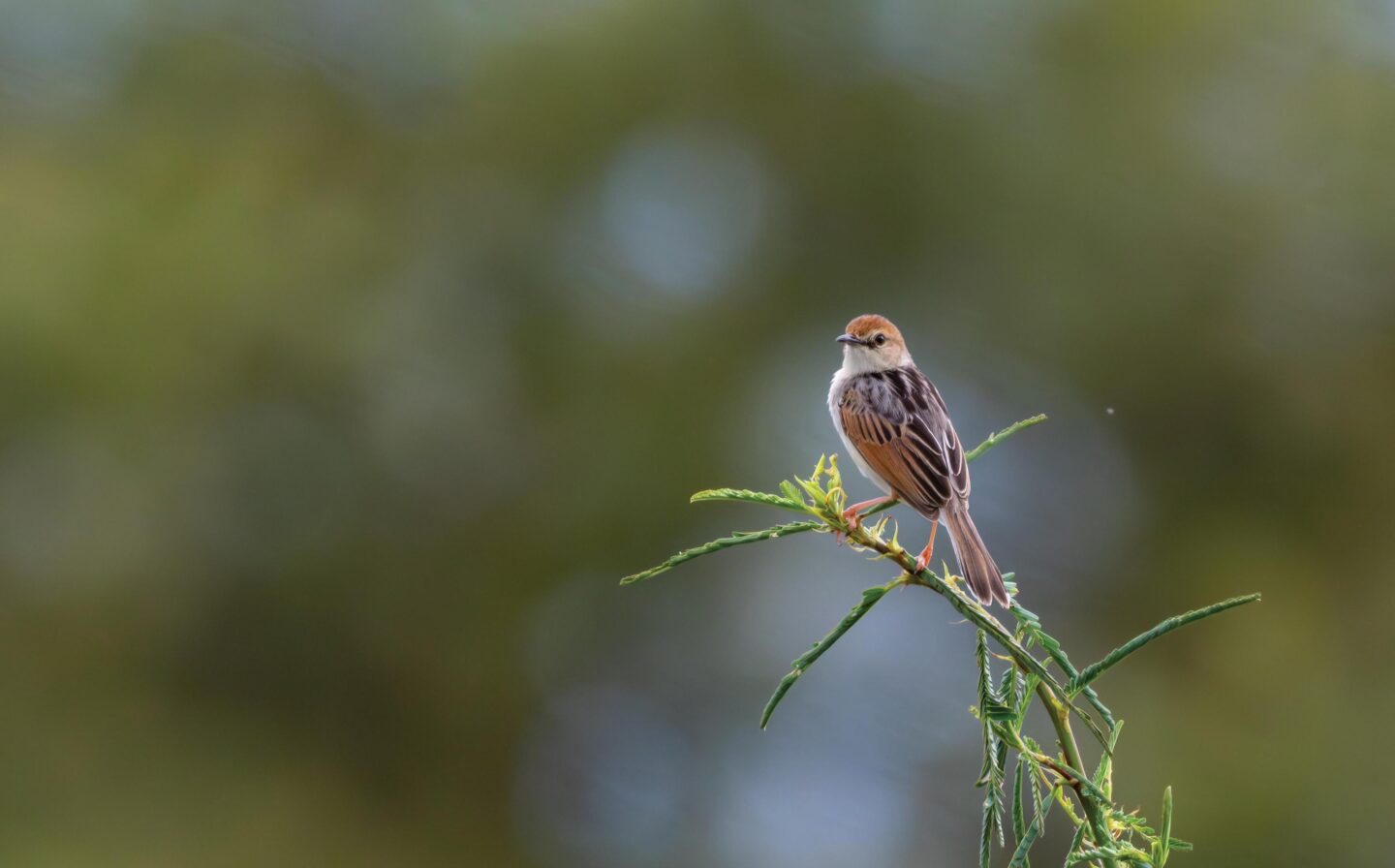
Birding in the
Zambezi
When, where and why?
One of the most common questions visitors to Namibia ask is: Where should they go for birding? As one of the most knowledgeable birders in Namibia and Southern Africa (self-proclaimed), I can confidently provide expert advice on where, when, and why to go birding in this incredible region.
Text Pompie Burger | Photographs Pompie Burger
From the Autumn 2025 issue
The Zambezi Region is undoubtedly Namibia’s most prolific birding area, boasting an impressive diversity of species. Of a possible 700+ bird species recorded in Namibia, over 450 can be found here, making it an essential destination for any birder.
Timing is crucial in birding, though the best time is always “as soon as possible!” However, the prime birding season is during the summer months when migratory species arrive, adding excitement and new ticks to your list. The ideal period to visit is from October to early January. Though these are the hottest months of the year, the rewards far outweigh the discomfort. Most migrants arrive in October, with some earlier and some later. Their arrival coincides with a period when vegetation is still manageable, making bird spotting significantly easier. If the rainy season starts early, it is best to adjust your travel dates to accommodate the arrival of “rain birds.”
Certain species, such as the Southern Carmine Bee-eaters and African Skimmers, begin their breeding season by late August. If they are on your must-see list, it’s best to visit early to witness their spectacular colonies.
It is often better to concentrate on one area over consecutive days rather than covering too much ground. This focused approach allows for a deeper understanding of the region, better birding opportunities, and the flexibility to adjust your itinerary as needed.
Early morning and late afternoon are the prime birding hours due to cooler temperatures and increased bird activity. Midday is best spent under a large tree at your campsite, where you’ll likely spot numerous species resting in the shade. Raptors take advantage of thermals generated by midday heat, making this a good time for spotting them soaring overhead.
Bwabwata National Park along the Kwando River is one of the richest birding spots due to its diverse habitats, including riverine forests, floodplains, and savannah woodlands. The broadleaf forests are an excellent place to find Racquet-tailed Rollers, Black-headed Orioles, White-crested Helmet-Shrikes, Green Pigeons, and Meyer’s Parrots. Keep an eye out for the elusive Narina Trogon—though I won’t make any promises! Along the river and floodplains, you can expect to see African Marsh Harriers, Lesser Jacanas, Half-collared Kingfishers, Wattled Cranes, Bat Hawks, Slaty Herons, and Rufous- bellied Herons. A stop at a seasonal pan may reward you with sightings of Little Bitterns or, if you’re lucky, a Western Yellow Wagtail. Raptors such as the Western Banded Snake Eagle, Ayres’s Hawk-Eagle, and European Honey Buzzard are also frequently spotted in the area.
“Timing is crucial in birding, though the best time is always as soon as possible!”
Mudumu and Nkasa Rupara National Parks, located further south, provide excellent birding opportunities with various lodges offering ideal conditions for spotting a range of specials. Among the birds to look out for here are the Copper Sunbird, Bradfield’s Hornbill, Black Cuckoo, Klaas’s Cuckoo, and African Emerald Cuckoo. These parks also offer a good chance of spotting Arnot’s Chat, Denham’s Bustard, Dickinson’s Kestrel, Lizard Buzzard, and Dark Chanting Goshawk.
East of Katima Mulilo, lodges such as Caprivi Houseboat Safari Lodge and Caprivi River Lodge provide birding opportunities along the river. Their expert guides can help you find the African Finfoot, Yellow-fronted Tinkerbird, Schalow’s Turaco, Trumpeter Hornbill, Yellow-throated Leaflove, and Eastern Nicator, all of which are possible lifers in this area.
Birding along the Zambezi River, particularly along the D3509, is an unforgettable experience. Among the highlights are the elusive Shelley’s Sunbird (which some claim to be extinct as it remains unseen by mere mortals like myself), African Rail, seasonal pans filled with Rock, Collared, and Black- winged Pratincoles, Luapula Cisticola, Black-crowned Tchagra, Black Coucal, White-crowned Lapwing, and Black-bellied Bustard. A boat trip might reward you with the rare Pel’s Fishing Owl or White-backed Night Heron. The African Skimmer breeding colonies on the river’s sandbanks are a must-see spectacle, though it requires an entire day to truly appreciate the experience.
Further east, along the Chobe River floodplains near Serondela Lodge and Chobe River Camp, birders can find some of the region’s special sightings, including the Rosy-throated Longclaw, Purple-banded Sunbird, and Collared Palm-Thrush.
Of course, this is just the tip of the hippo’s ears! Many more species could be mentioned, but these are the birds we actually saw and photographed—not just promises. I’ve chosen not to rate specific lodges or campsites because the experience varies from person to person. Instead, I encourage you to explore, take your time, and truly immerse yourself in the Zambezi’s birding paradise.
If you are a serious twitcher looking for ultra-rare species, I highly recommend booking a specialised birding safari with an expert guide who can help you track down your lifers—including birds that may not even exist! Happy birding! TN
TICK THEM OFF!
- Racquet-tailed Roller
- Black-headed Oriole
- White-crested Helmet- Shrike
- Green Pigeon
- Meyer’s Parrot
- Narina Trogon
- African Marsh Harrier
- Lesser Jacana
- Half-collared Kingfisher
- Wattled Crane
- Bat Hawk
- Slaty Heron
- Rufous-bellied Heron
- Little Bittern
- Western Yellow Wagtail
- Western Banded Snake Eagle
- Ayres’s Hawk-Eagle
- European Honey Buzzard
- Dickinson’s Kestrel
- Lizard Buzzard
- Dark Chanting Goshawk
- Copper Sunbird
- Bradfield’s Hornbill
- Black Cuckoo
- Klaas’s Cuckoo
- African Emerald Cuckoo
- Arnot’s Chat
- Denham’s Bustard
- African Finfoot
- Yellow-fronted Tinkerbird
- Schalow’s Turaco
- Trumpeter Hornbill
- Yellow-throated Leaflove
- Eastern Nicator
- Shelley’s Sunbird
- African Rail
- Rock Pratincole
- Collared Pratincole
- Black-winged Pratincole
- Luapula Cisticola
- Black-crowned Tchagra
- Black Coucal
- White-crowned Lapwing
- Black-bellied Bustard
- Southern Weaver
- Brown-throated Weaver
- Pel’s Fishing Owl
- White-backed Night Heron
- African Skimmer
- Rosy-throated Longclaw
- Purple-banded Sunbird
- Collared Palm-Thrush
More to explore

Discover Airlines launches a new direct flight between Windhoek and Munich
